Claudio Tennie
Machine learning applications in archaeological practices: a review
Jan 07, 2025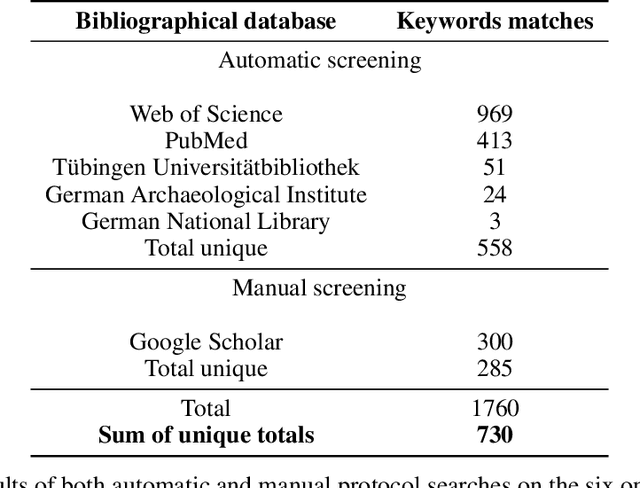
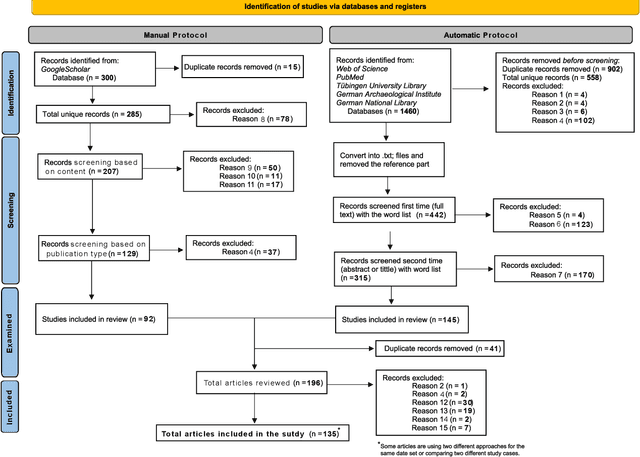
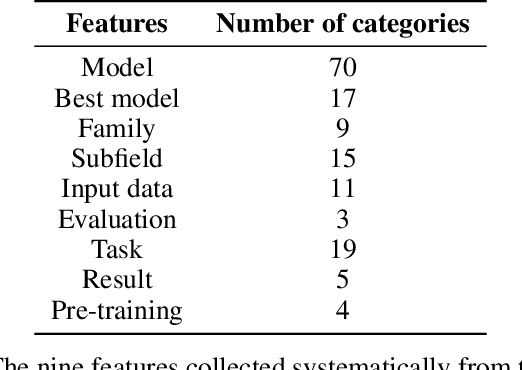
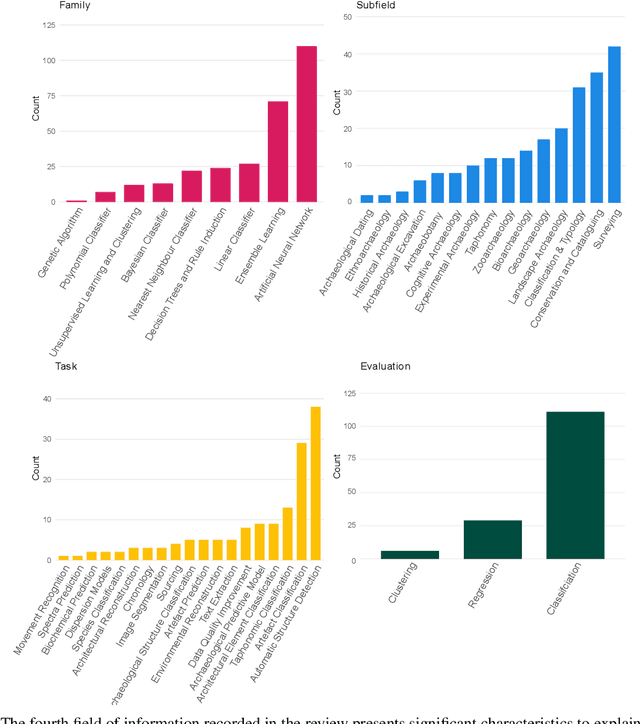
Abstract:Artificial intelligence and machine learning applications in archaeology have increased significantly in recent years, and these now span all subfields, geographical regions, and time periods. The prevalence and success of these applications have remained largely unexamined, as recent reviews on the use of machine learning in archaeology have only focused only on specific subfields of archaeology. Our review examined an exhaustive corpus of 135 articles published between 1997 and 2022. We observed a significant increase in the number of relevant publications from 2019 onwards. Automatic structure detection and artefact classification were the most represented tasks in the articles reviewed, followed by taphonomy, and archaeological predictive modelling. From the review, clustering and unsupervised methods were underrepresented compared to supervised models. Artificial neural networks and ensemble learning account for two thirds of the total number of models used. However, if machine learning is gaining in popularity it remains subject to misunderstanding. We observed, in some cases, poorly defined requirements and caveats of the machine learning methods used. Furthermore, the goals and the needs of machine learning applications for archaeological purposes are in some cases unclear or poorly expressed. To address this, we proposed a workflow guide for archaeologists to develop coherent and consistent methodologies adapted to their research questions, project scale and data. As in many other areas, machine learning is rapidly becoming an important tool in archaeological research and practice, useful for the analyses of large and multivariate data, although not without limitations. This review highlights the importance of well-defined and well-reported structured methodologies and collaborative practices to maximise the potential of applications of machine learning methods in archaeology.
Evolved Open-Endedness in Cultural Evolution: A New Dimension in Open-Ended Evolution Research
Mar 24, 2022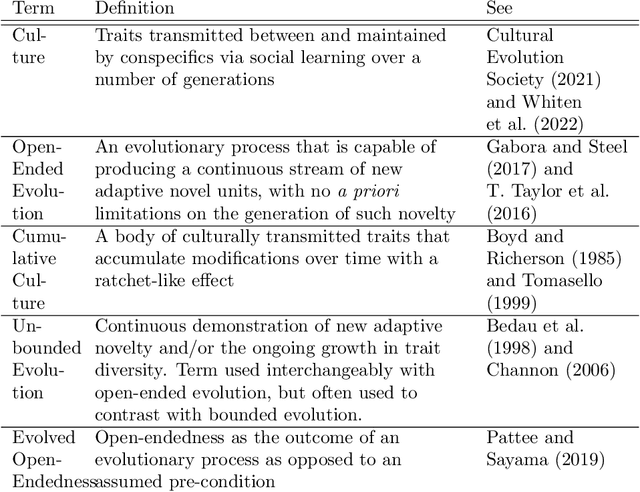
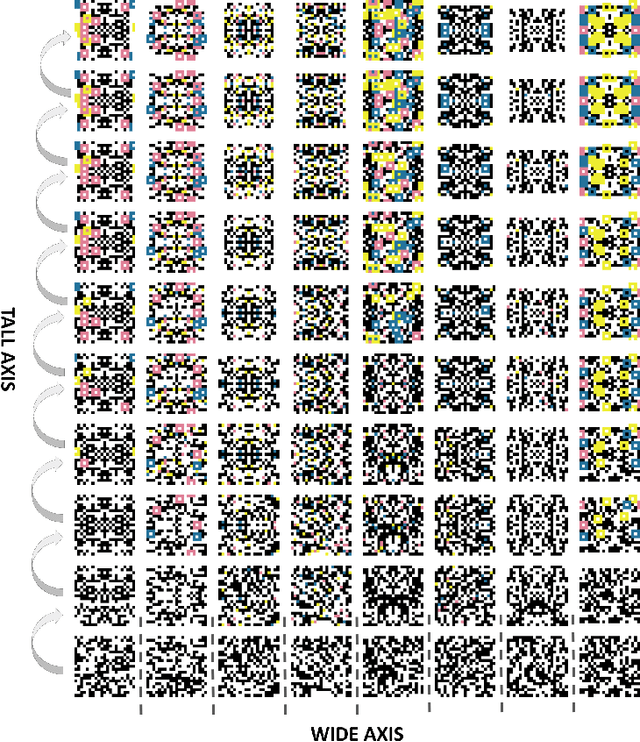
Abstract:The goal of Artificial Life research, as articulated by Chris Langton, is "to contribute to theoretical biology by locating life-as-we-know-it within the larger picture of life-as-it-could-be" (1989, p.1). The study and pursuit of open-ended evolution in artificial evolutionary systems exemplifies this goal. However, open-ended evolution research is hampered by two fundamental issues; the struggle to replicate open-endedness in an artificial evolutionary system, and the fact that we only have one system (genetic evolution) from which to draw inspiration. Here we argue that cultural evolution should be seen not only as another real-world example of an open-ended evolutionary system, but that the unique qualities seen in cultural evolution provide us with a new perspective from which we can assess the fundamental properties of, and ask new questions about, open-ended evolutionary systems, especially in regard to evolved open-endedness and transitions from bounded to unbounded evolution. Here we provide an overview of culture as an evolutionary system, highlight the interesting case of human cultural evolution as an open-ended evolutionary system, and contextualise cultural evolution under the framework of (evolved) open-ended evolution. We go on to provide a set of new questions that can be asked once we consider cultural evolution within the framework of open-ended evolution, and introduce new insights that we may be able to gain about evolved open-endedness as a result of asking these questions.
 Add to Chrome
Add to Chrome Add to Firefox
Add to Firefox Add to Edge
Add to Edge